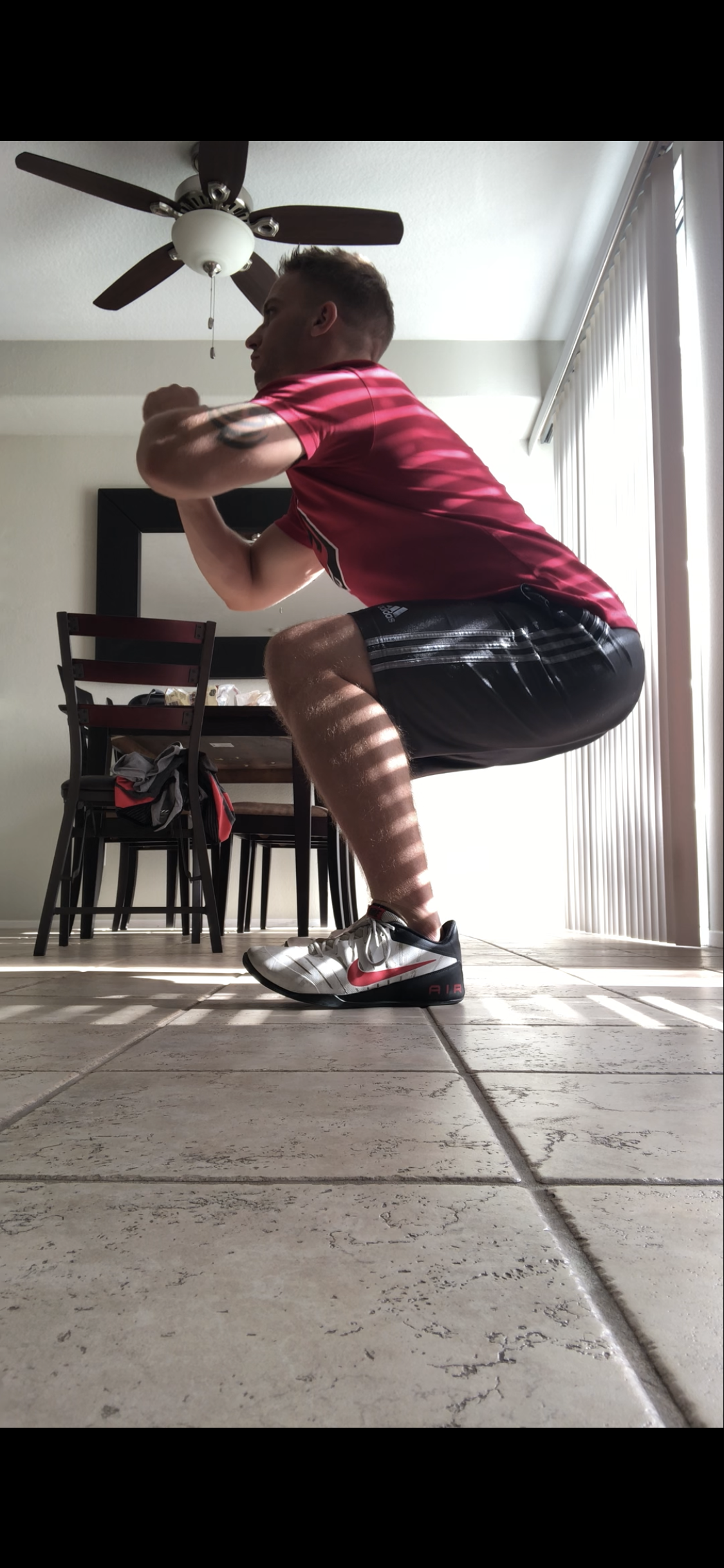Why do I have knee/low back pain?
A lot of us suffer from knee pain and or low back pain. We may not understand what we need to do to address the problem.
Our pain is likely caused by a joint above or below the problem area.
The knee is meant to be a stable joint.
When you are walking, running, squatting; the knee must be stable through the range of motion. Above are the hips and below are the ankles, both joints are designed to be mobile.
During a squat, if either the ankles or hips are immobile, your movement patterns will lose integrity and cause injuries.
I recommend that you record a video of you squatting from a side view as you will get a lot of information about your movement mechanics.
Begin initiating the squat with a hip hinge, pushing the hips back. You then begin flexing the knee shortly after while proceeding to drop the hips. We should be able to get down to or below 90 degrees with our thighs before going back up. Depending on your hip structure, you may or may not get a ‘butt wink’ at the bottom of the squat (where your tailbone curls underneath as your hips move down).
Here’s an example of what it may look like if you have immobile ankles when performing a squat:
Notice the lack of range of motion in my ankles causes me to lean my torso forward to get low into the squat. This can be very dangerous if you have a barbell on your back and potentially cause injury.
Here is an example of limited hip mobility.
I’ve seen much worse. I did my best to get into bad positioning for this but often times restriction in the hips looks a lot uglier:
Notice here that the heels of my feet are lifted off the ground. Limited hip mobility will limit the ability to push the center of gravity back, making it hard to load the posterior chain of your body. Putting a load on your back will allow your heels to touch the ground but you will likely still feel the weight on the toes of your feet. Repeadetly doing squats with this movement pattern could quickly cause knee pain or low back pain.
Here’s an example of good mobility in both hips and ankles:
I am able to initiate movement in hips then move knees forward slightly allowing myself to get deep into a squat with good form. I have the weight of my body on the heels of my feet, my glutes are engaged.
If you find yourself lacking range of motion in either joint, you can YouTube or google plenty of stretches for each area.
I strongly recommend stretching throughout the day but if you’re going to the gym I would refrain from doing too much static stretching as this may cause injury. I would instead focus on more myofascial release and mobility work followed by some activation work of the muscles that are weak and underused. For example, if your hips are tight I would do some myofascial release of the thighs and hip flexors followed by some dynamic stretching, followed up with some activation exercises for the glutes.
It took time to get into a poor posture so it will take time to correct your imbalances but through consistency, you can live life pain-free through correcting imbalances and movement patterns.
I hope you find this helpful and if you need any more information on the topic please feel free to reach out!
Live well and functionally!
Brandon Brown



